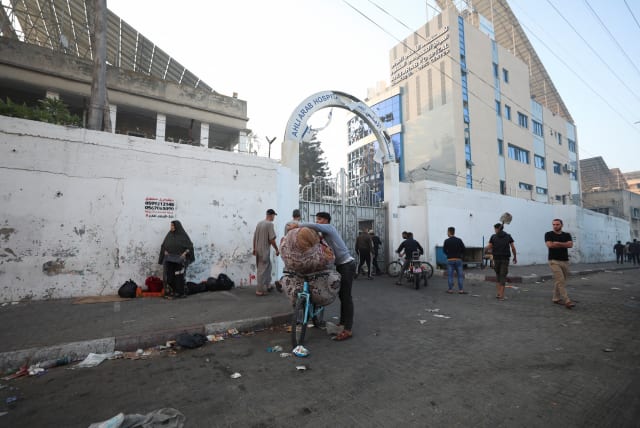'New York Times' backtracks on Gaza hospital blast coverage

The New York Times has issued an Editor's Note acknowledging mistakes in reporting on the Gaza hospital blast, on the same day that a Hamas official told them that the evidence 'dissolved.'
The New York Times published an Editor’s Note addressing their October 17 article on the Gaza hospital blast, in an Editor’s Note six days after the report.
The Times acknowledged that the coverage led with claims by officials from the terrorist organization Hamas, and failed to “make clear that those claims could not immediately be verified.”
The note acknowledged that “the report left readers with an incorrect impression about what was known and how credible the account was.”
The Editor's Note also addressed that Israel has denied involvement in the blast, "and blamed an errant rocket launch by the Palestinian faction group Islamic Jihad" - a claim that United States officials and other international investigators have confirmed.
“Given the sensitive nature of the news during a widening conflict and the prominent promotion it received, Times editors should have taken more care with the initial presentation, and been more explicit about what information could be verified. Newsroom leaders continue to examine procedures around the biggest breaking news events — including for the use of the largest headlines in the digital report — to determine what additional safeguards may be warranted,” the Editor’s Note concluded.
‘Hamas Fails to Make Case That Israel Struck Hospital’
On the same day as it published the Editor’s Note, the Times released an article entitled "Hamas Fails to Make Case That Israel Struck Hospital."
In the new article on the blast, the Times acknowledged that Hamas has changed its story on the blast multiple and that the Health Ministry in Gaza is run by Hamas – meaning the information provided by the ministry is from the terrorist organization.
The Times also revealed they requested to see the evidence of the munition, to which Hamas Official Ghazi Hamad responded “The missile has dissolved like salt in the water. It’s vaporized. Nothing is left.
Salama Maroof, the head of the Hama media office told the Times in a text message: “Who says we’re obligated to present the remnants of every rocket that kills our people? In general, you can come and research and confirm for yourself from the evidence we possess.”
“One would expect remnants to be recoverable in all but the most extreme circumstances, and the available imagery of the hospital site suggests something ought to be identifiable on the ground,” N.R. Jenzen-Jones, director of Armament Research Services, told the Times.
Jerusalem Post Store
`; document.getElementById("linkPremium").innerHTML = cont; var divWithLink = document.getElementById("premium-link"); if (divWithLink !== null && divWithLink !== 'undefined') { divWithLink.style.border = "solid 1px #cb0f3e"; divWithLink.style.textAlign = "center"; divWithLink.style.marginBottom = "15px"; divWithLink.style.marginTop = "15px"; divWithLink.style.width = "100%"; divWithLink.style.backgroundColor = "#122952"; divWithLink.style.color = "#ffffff"; divWithLink.style.lineHeight = "1.5"; } } (function (v, i) { });

